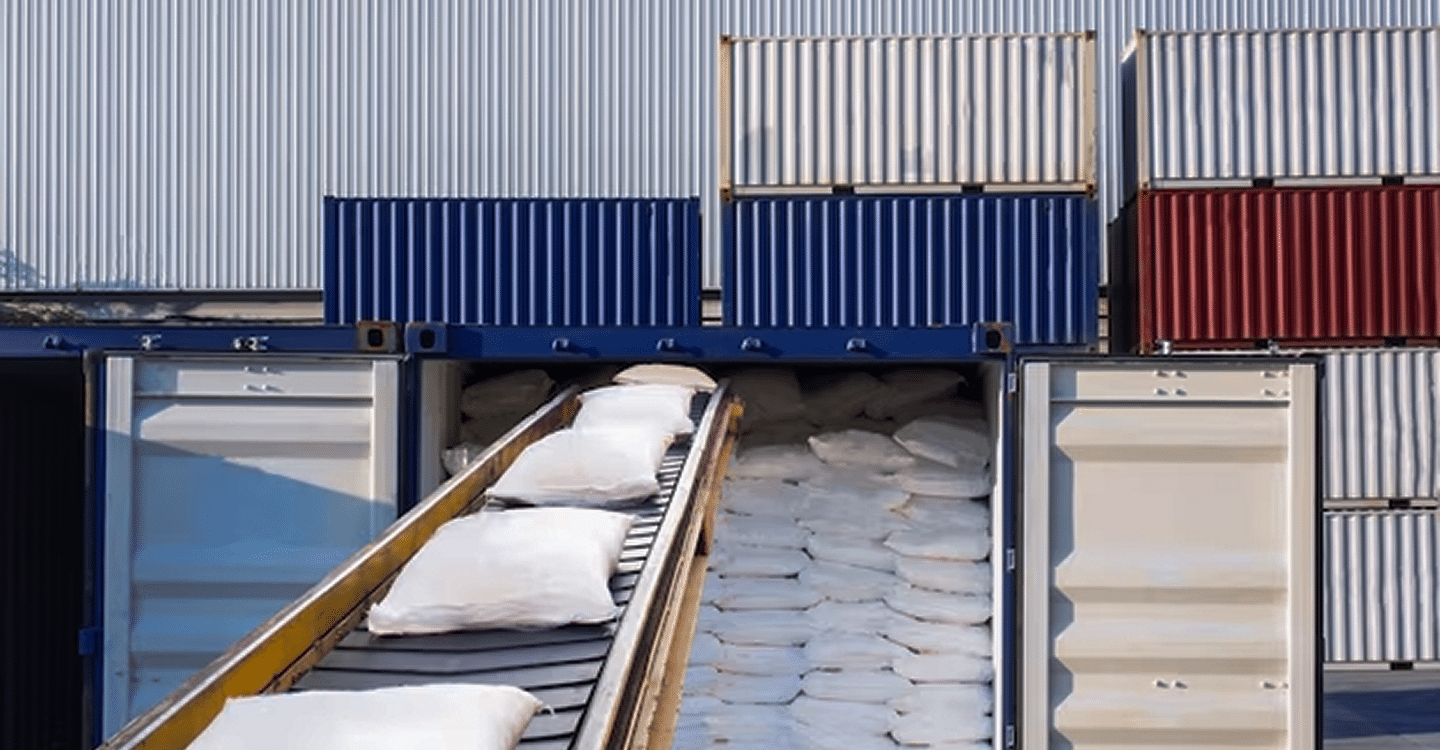
In the world of global exports every cost-saving measure is up for debate. One question we hear often from exporters: Do I really need to use desiccants like Hybags in my shipments? On the surface, skipping moisture protection might seem like an easy way to trim shipping costs—but what’s often overlooked is the true cost of moisture damage and how easily it can be avoided.
Moisture damage can be particularly detrimental to agricultural products, leading to issues such as mildew, corrosion, and container rain. Using desiccants helps maintain optimal humidity levels within containers by removing moisture from the ambient air, thereby protecting various cargo types, including agricultural goods, from these moisture-related problems.
When goods are shipped across oceans, they face major fluctuations in temperature and humidity. These conditions can cause container rain—condensation forming on the inside of the container roof and walls—which drips onto products, packaging, and pallets. Moisture can condense on the container walls, leading to issues like cargo sweat. The result? Mold, rust, weakened packaging, and even full product loss.
For businesses shipping high-value items, moisture protection is a given. But ironically, low-cost and low-margin products are often the most vulnerable, because a small percentage of spoilage can wipe out already thin profit margins. Desiccants can prevent cargo sweat by removing moisture from the air.
Desiccant bags contain moisture-absorbing materials (e.g., silica gel) that remove water vapor from enclosed spaces. Some desiccant bags use a combination of calcium chloride and starch to enhance moisture absorption efficiency. Some desiccant bags use calcium chloride for superior moisture absorption. By reducing humidity, they prevent condensation, mold, corrosion, and packaging failure during transport.
Desiccant bags deliver reliable moisture control across diverse sectors:
Desiccants, like our Hybag, offer one of the most efficient and affordable ways to guard against container rain and ambient humidity. They actively absorb moisture from the air inside the container before it can condense into damaging water droplets. Desiccants help manage changes in temperature and high relative humidity to prevent moisture damage. Desiccants are also crucial for maintaining low humidity levels during storage, ensuring that goods remain dry and intact until they reach their destination.
Unlike passive methods (like liners or absorbent paper), Hybag desiccants:
In other words, they just work.
Hybag is Hydry’s workhorse desiccant bag—trusted by exporters around the world. Some Hybag desiccant bags come with a convenient hook for easy installation in various industrial and scientific settings. What sets it apart is a combination of high moisture absorption capacity, robust design packaging, and a cost-effective format for various shipping methods. Hybag desiccant bags are also environmentally safe and available in various sizes to suit different shipment needs.
Whether you’re moving electronics, textiles, food products, or bulk raw materials, Hybag can be adapted to your container size, cargo type, and transit time. And because it’s part of the Hydry line, it meets the same standards of quality and reliability as our premium solutions—without the premium cost.
Let’s break it down: Spending a few dollars per container on Hybags can prevent losses of hundreds—if not thousands—caused by returns, repackaging, or customer dissatisfaction. Desiccants prevent the deterioration of packaging materials and the formation of condensation, minimizing the risk of moisture-related damages and ensuring the integrity of goods during transport. When math is that simple, the decision becomes clear.
Calculate desiccant needs by container volume: typically 1 kg of desiccant per 10 m³. Increase dosage by 25–50 % for high-humidity routes or sensitive cargo to ensure adequate moisture control throughout transit.
Position desiccant bags evenly throughout the container: affix to ceiling and walls, and place bags on the floor near pallets. This distribution maximizes air circulation and ensures uniform moisture absorption across all cargo levels.
Industrial desiccant bags absorb moisture continuously for 4–8 weeks, covering typical ocean transit durations. Always verify manufacturer specifications for exact effective period based on cargo type and shipping conditions.
Most industrial desiccant bags are single-use; gentle heat reactivation may be possible for certain silica-gel types following manufacturer instructions. Hybag and similar bulk solutions are designed for one-time deployment and safe disposal.
Food-grade desiccants comply with FDA and EU regulations and are safe for electronics, pharmaceuticals, and foodstuffs, ensuring that each item remains protected from moisture damage. Robust packaging prevents material contact with cargo, ensuring non-toxic, dust-free moisture control throughout shipping.
If you’re exporting goods that can’t afford damage, can’t afford returns, or can’t afford added costs, then desiccating is not optional, it’s essential. Desiccants protect products from moisture damage, ensuring they remain in optimal condition during transit.
Hybags gives you peace of mind at a price point that respects your margin. The real question isn’t whether you can afford to use moisture protection. It’s whether you can afford not to.
Contact Eurolog Packing Group for more information on the Hybag Series so we can find the best fit for your application. If you are interested in custom packaging solutions, reach out to us to learn more about how we can meet your specific needs.

Sandra Malouf is the President of Eurolog Packing Group and has spent her career focused on Industrial Packaging. With a proven track record of helping businesses avoid supply chain disruptions, Sandra’s visionary leadership elevates the industry. She’s committed to developing sustainable practices and continues to shape the future of industrial packaging by listening to the customer and offering unique solutions applicable to various industries across the world. The company’s main focus is temperature stabilization and moisture damage prevention in exports affected by extreme variations in global temperatures.
© 2025 Eurolog Packing Group